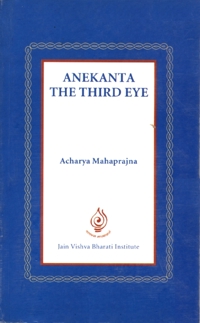
Anekanta has defined both the subtle and the gross and presented their respective perspectives. The two perspectives are the nischay naya or the transcendental perspective and the vyavahar naya or the pragmatic perspective. To know the subtle truths the nischay naya helps and to know the gross truths, vyavahara nayq helps.
When both these perspectives are relative, mutually connected, then we arrive at, the conclusion that similarity and dissimilarity are not independent but mutually connected. A whole thinking based on mutual connection is then opened to us. It is on the basis of this mutual connection that Jain seers of medieval times have done a great deal of work and with every philosophy have shown the path of concord.
One Jain seer has written that there is no difference between soul and matter. The difference is only in one attribute. The soul is the sentient and the body is not. Both the soul and the body have infinite attributes. Amongst all these attributes the difference lies only in one: that the soul is the sentient and the body is not. This is a very significant observation. Indeed when all but one attribute are similar then, there is large similarity. The difference is created by a single attribute.
 Acharya Mahaprajna
Acharya Mahaprajna
